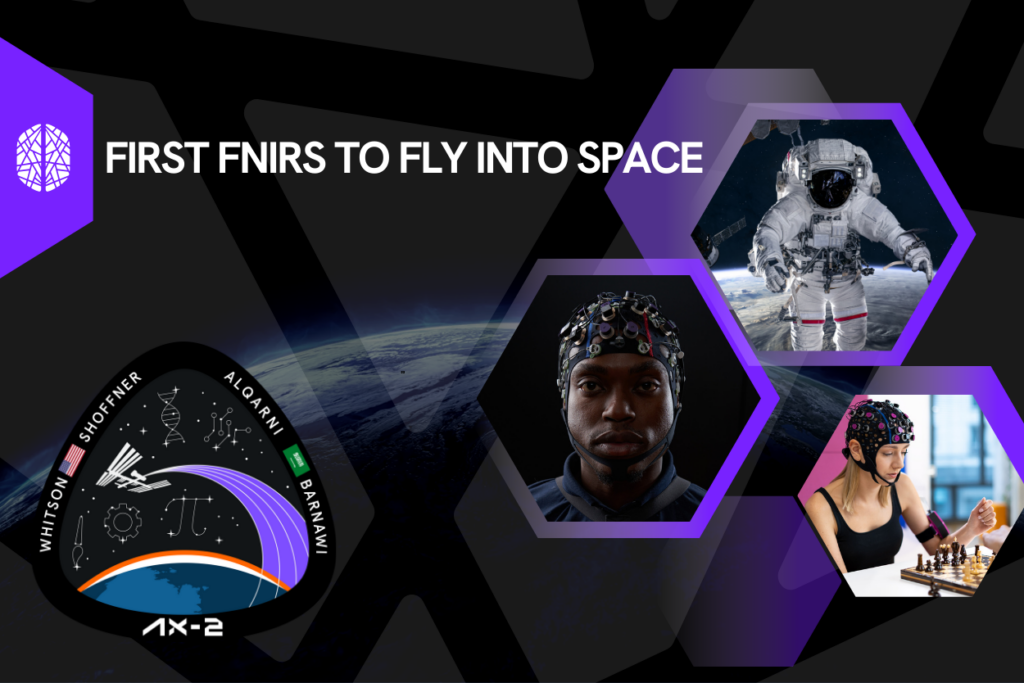Watch mission launch at approximately 7:00 p.m. ET
Cortivision is the first fNIRS to operate in space
We are happy to announce that our cooperation with Axiom Space (we have informed about at the end of 2022) has entered a crucial phase. On the night of May 21-22, 2023, a second private mission to the International Space Station will begin. Astronauts from Axiom Space (Houston, USA), a space company collaborating with NASA, will travel to the International Space Station (ISS) to conduct extensive research and test new technologies in low-Earth orbit. This is a very important event for Cortivision, as our Photon Cap will be one of the pioneering studies carried out on the ISS.

During the Ax-2 mission, fNIRS will be used for the first time to record the brain activity of astronauts during spaceflight. For this purpose, we had to make minor adjustments to our Photon Cap wireless system to make it suitable for spaceflight conditions and NASA’s certification regime. Our devices will be used for cognitive experiments that are part of the Nebula project.
Nebula human research biosamples and biodata in collaboration with Nebula Research & Development Company, Keele University, and Weill Cornell Medicine
This portfolio of projects will look at how humans adapt and respond to spaceflight to better understand human physiology in microgravity, which will contribute to our understanding of how to keep humans healthy in space. Projects utilizing novel neuroscience tools include measuring blood flow to the brain and the brain’s electrical activity, assessing intracranial pressure by non-invasive assessment of the pupil of the eye, and monitoring changes in the optic nerve over time. Improved monitoring of neurological health may help make spaceflight safer in the future and allow for the development of rapid, non-invasive monitoring, as well as early interventions and the development of countermeasures. Blood and bio-sample specimens will also be taken to examine multi-omic biomarkers related to spaceflight and also to map changes in the length, structure, and epigenetics of chromosomes and telomeres.
How can fNIRS work in space?
Functional Near-Infrared Spectroscopy (fNIRS) is a non-invasive neuroimaging technique that measures changes in the cerebral cortex’s oxygenated and deoxygenated hemoglobin concentration. fNIRS is safe, portable, and relatively robust to electromagnetic interference or motion artifacts, so it is often considered a promising technology for application in extreme environmental conditions such as spaceflights. By using fNIRS, researchers would potentially monitor changes in neural activity in astronauts’ brains, which can help to understand better the effects of spaceflight on cognitive and neurological function.
Before the mission, the participants will perform experimental tasks while the fNIRS monitors different areas of their brains. Then they will complete the same tasks and measures during the flight at two-time points throughout the mission. After returning to Earth, the astronauts will participate in fNIRS measurement again. Therefore, it will be possible to compare whether brain activity patterns change due to space mission.
The success of the first fNIRS measurement during spaceflight could open up many new applications for this technology. For example, researchers can use fNIRS to optimize astronaut performance and well-being during space missions by studying how the brain adapts to spaceflight. In particular, fNIRS can be applied to study the effects of isolation, confinement, and other psychosocial stressors that astronauts may experience during long-duration missions. Additionally, fNIRS can be used to study astronauts’ brain activity during tasks critical for spaceflight, such as piloting a spacecraft or performing repairs on the International Space Station. Last but not least, as one of the few technologies, fNIRS may be able to monitor changes in brain physiology during planned expeditions to Mars.
Watch first fNIRS in space launch!
The webcast will follow the journey of the four-person, multinational Ax-2 crew from crew walkout to liftoff from Launch Complex 39A at NASA’s KSC in Florida at 5:37 p.m. ET. It will continue until roughly 15 minutes after launch with stunning views of the spacecraft traveling to the ISS. Watch live at axiomspace.com.
We hope to share more news about the results after the crew comes back safely to Earth 😉
